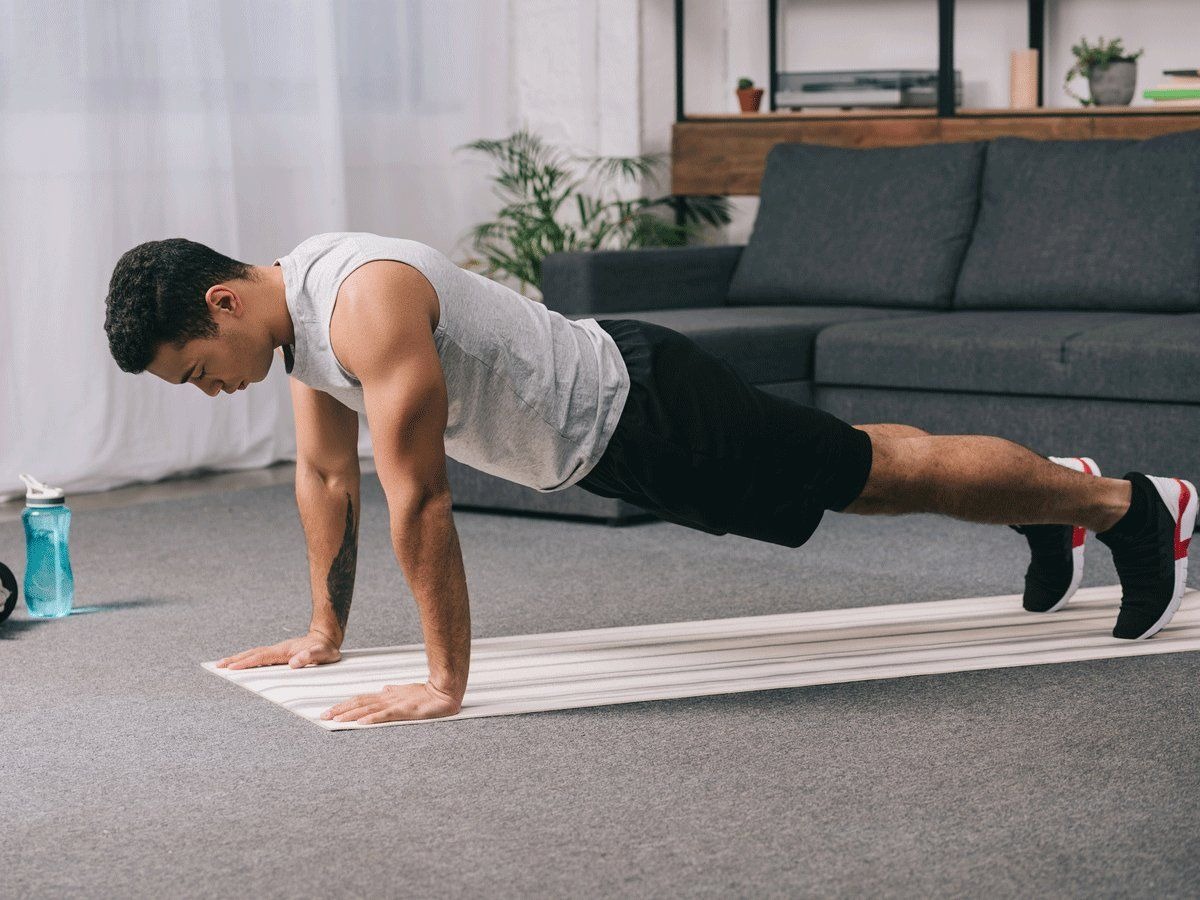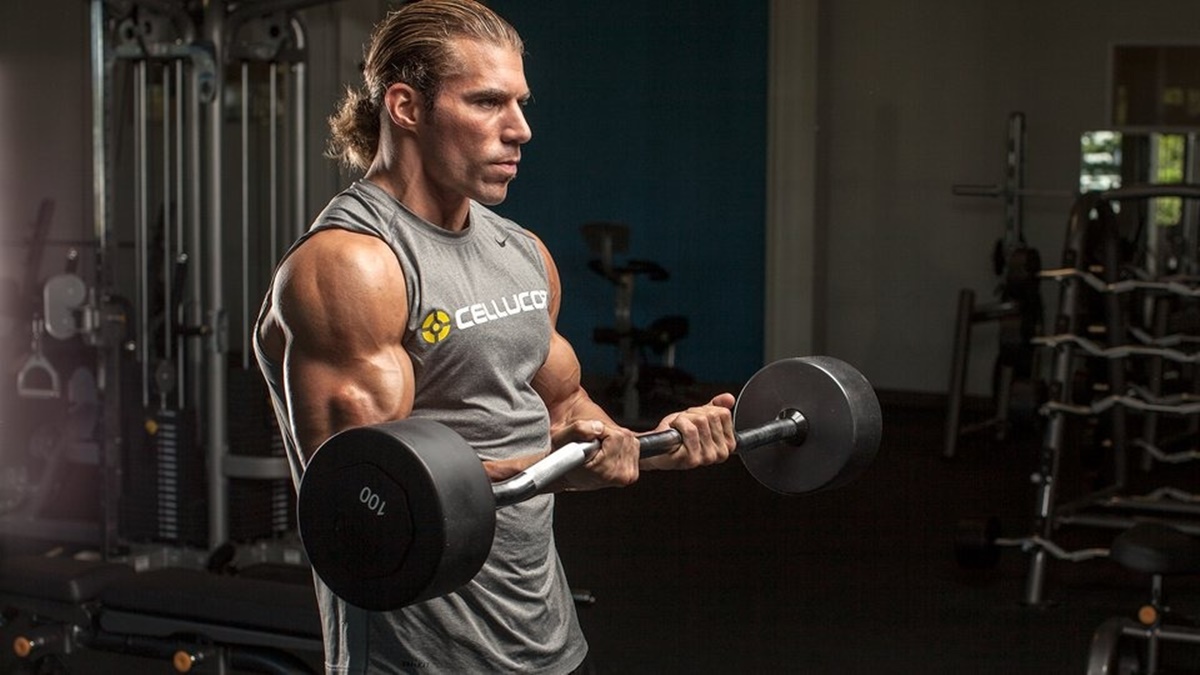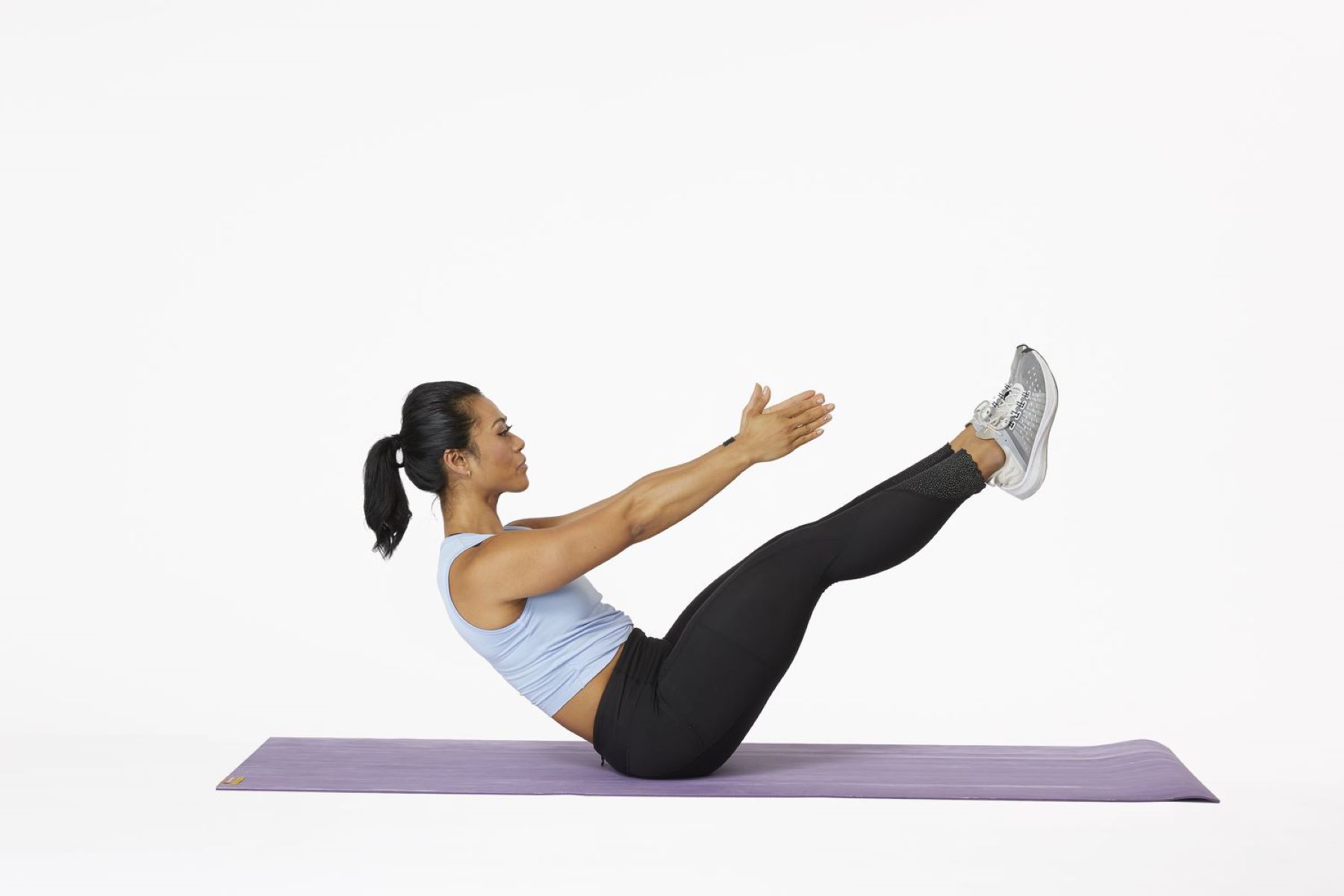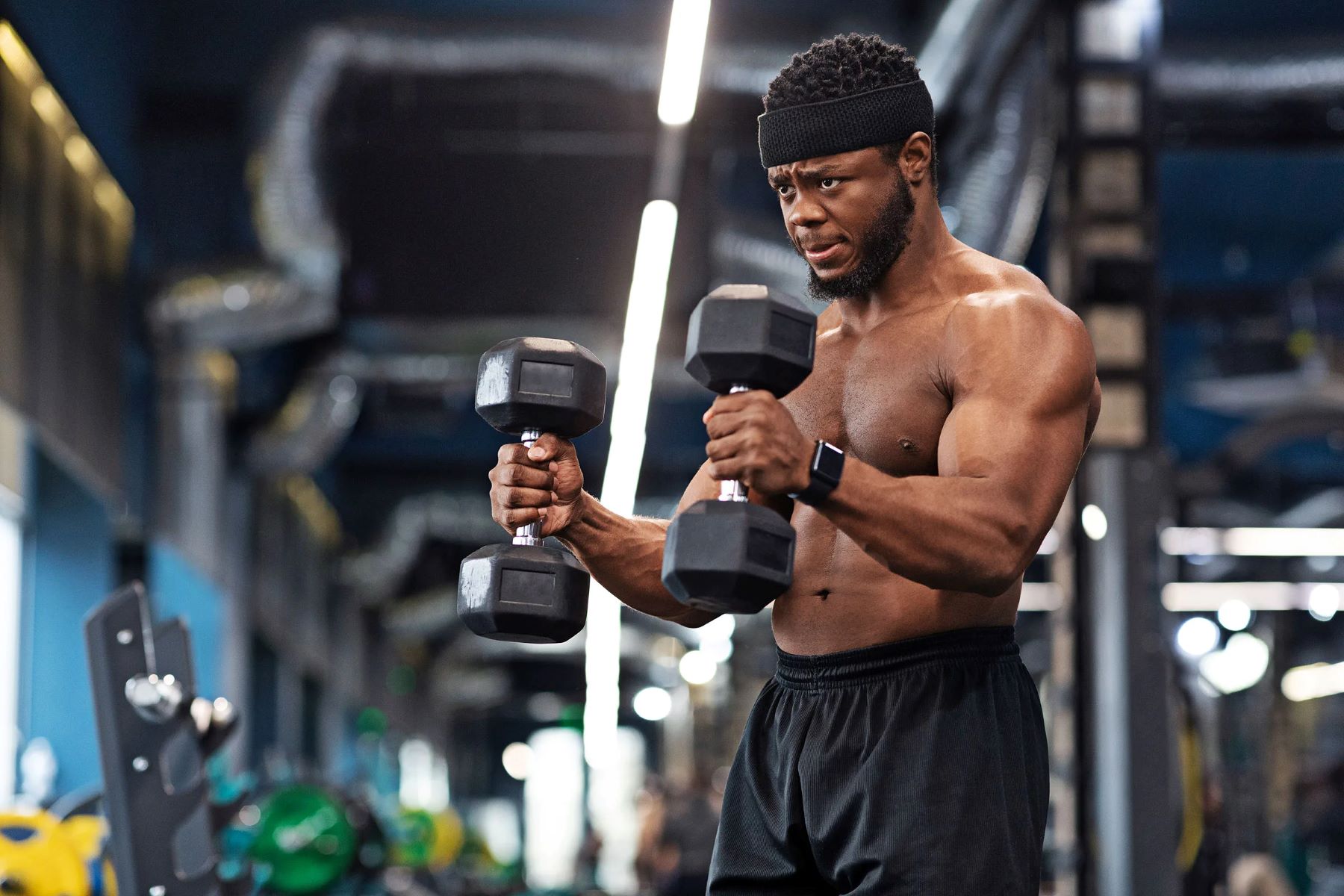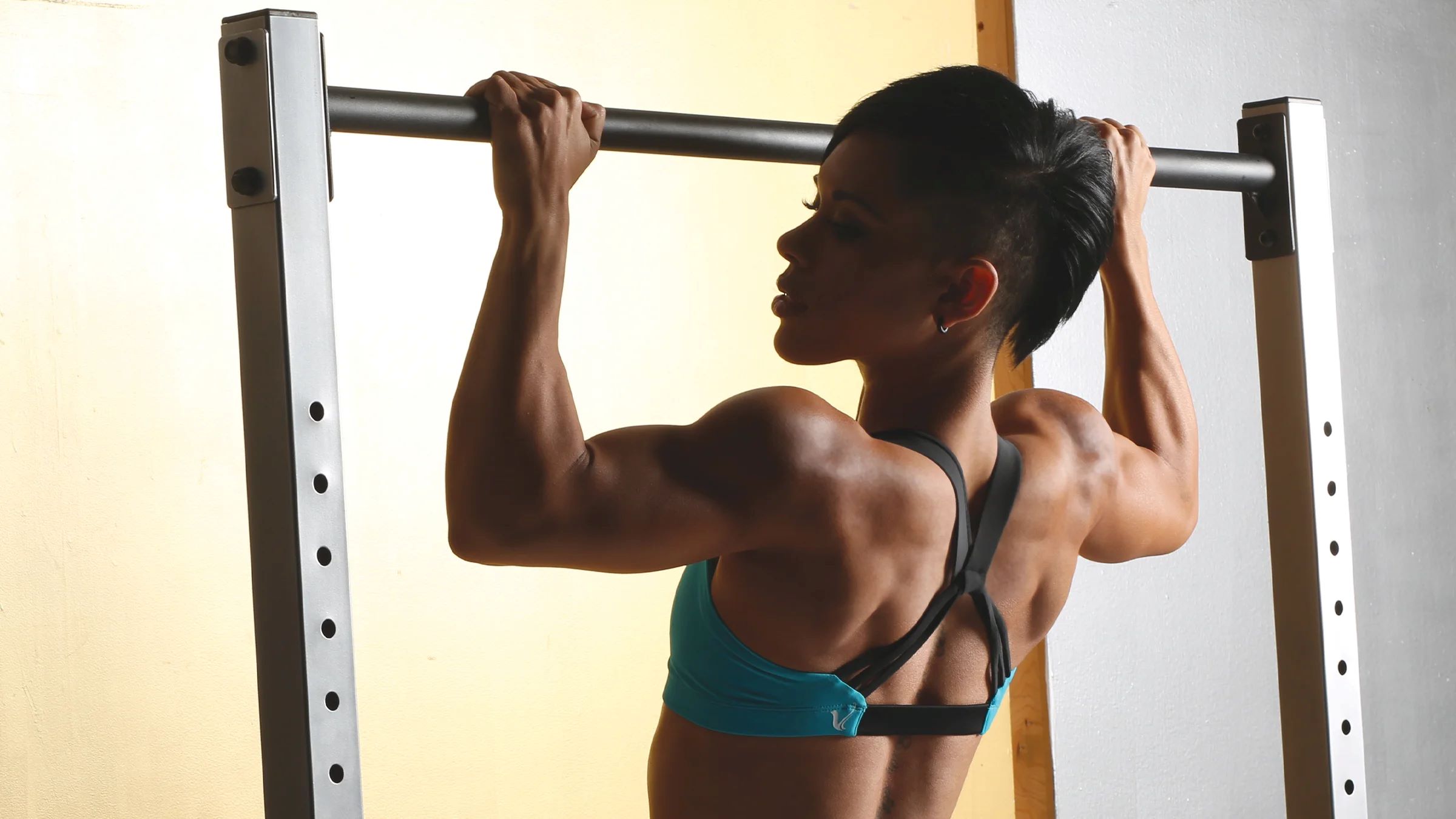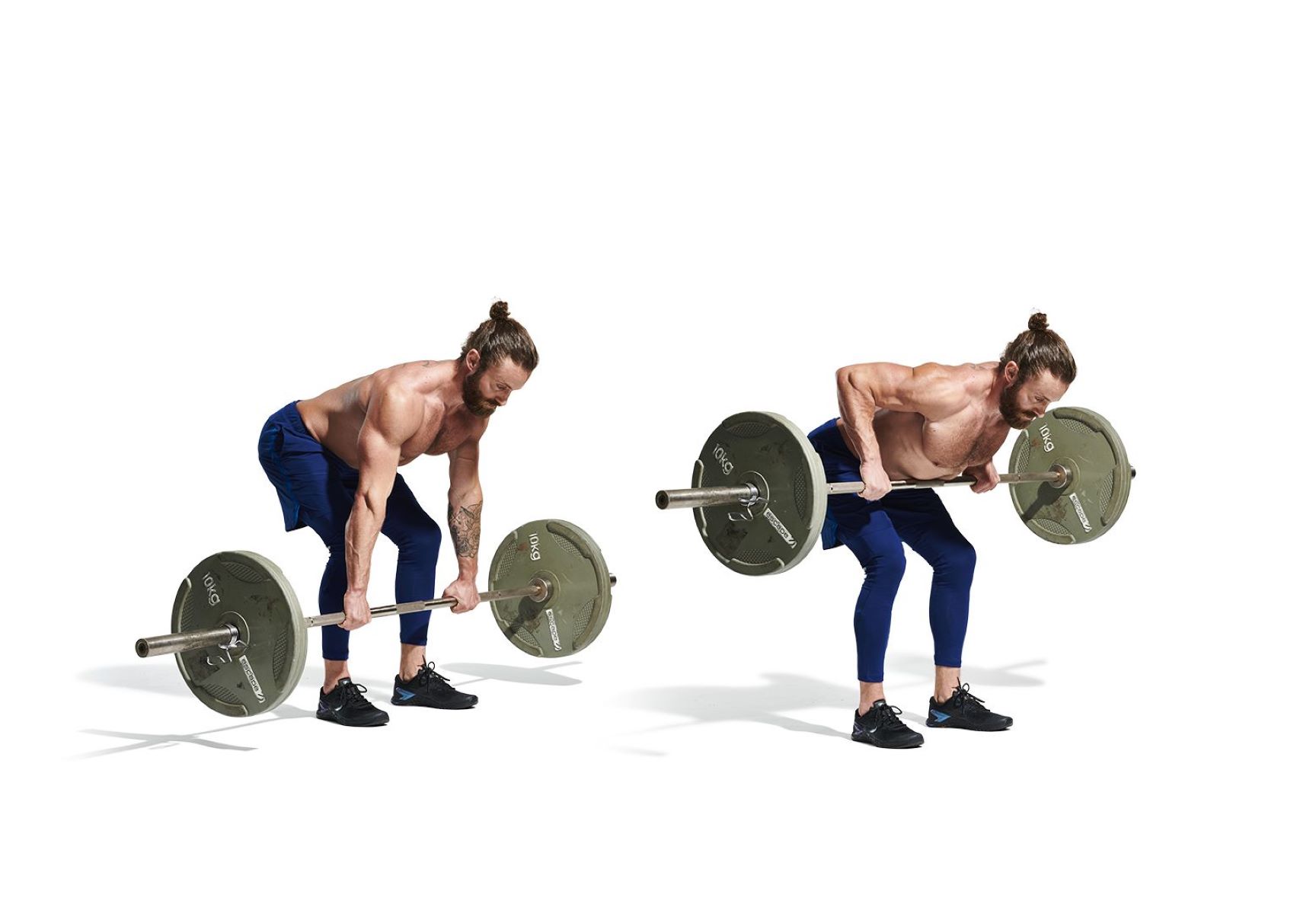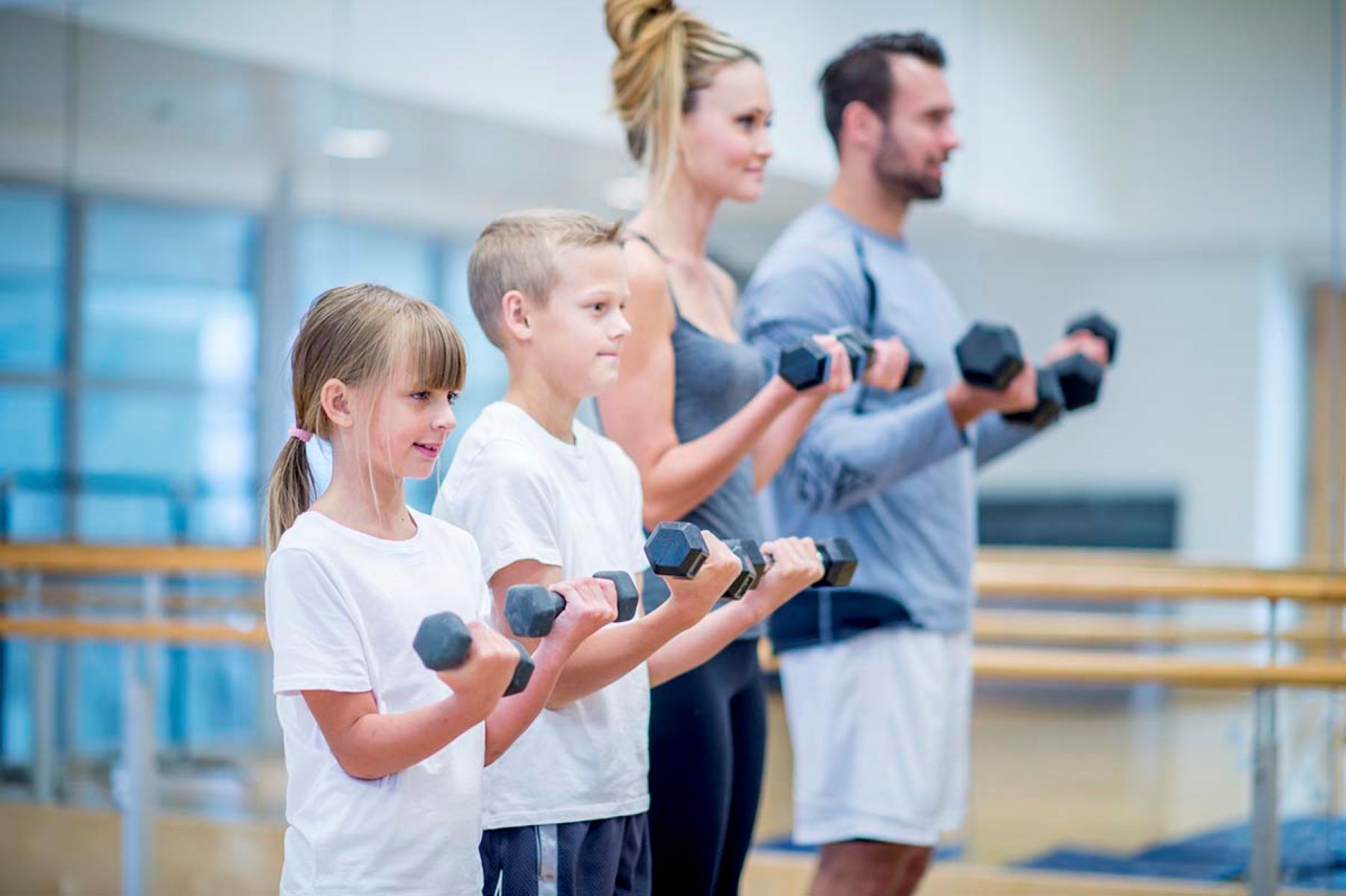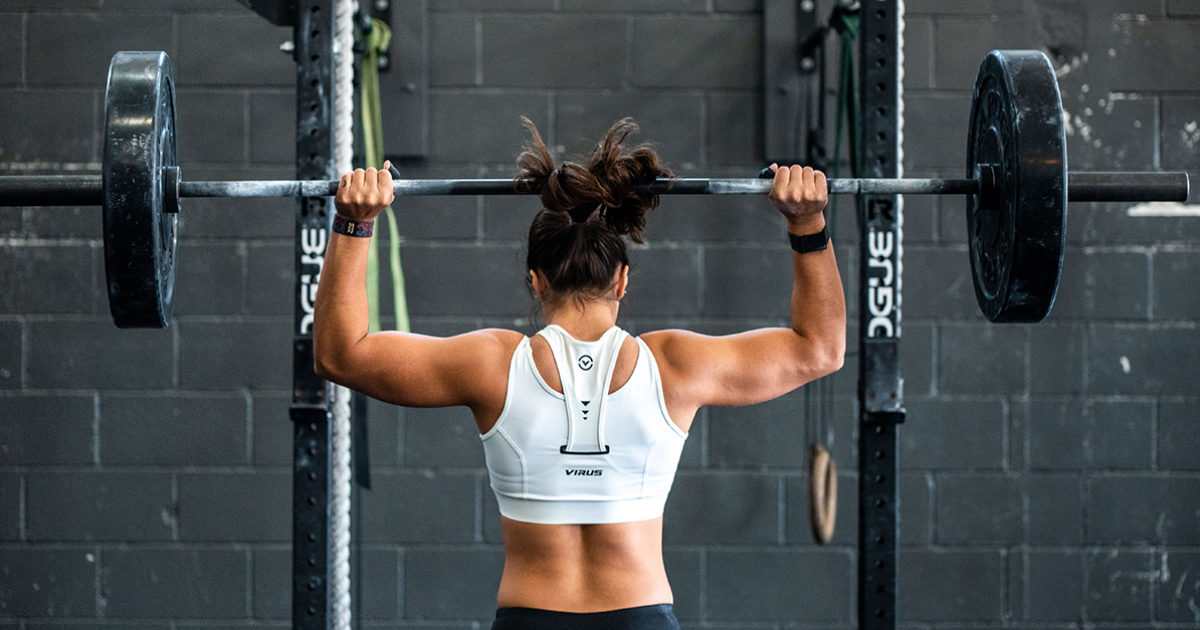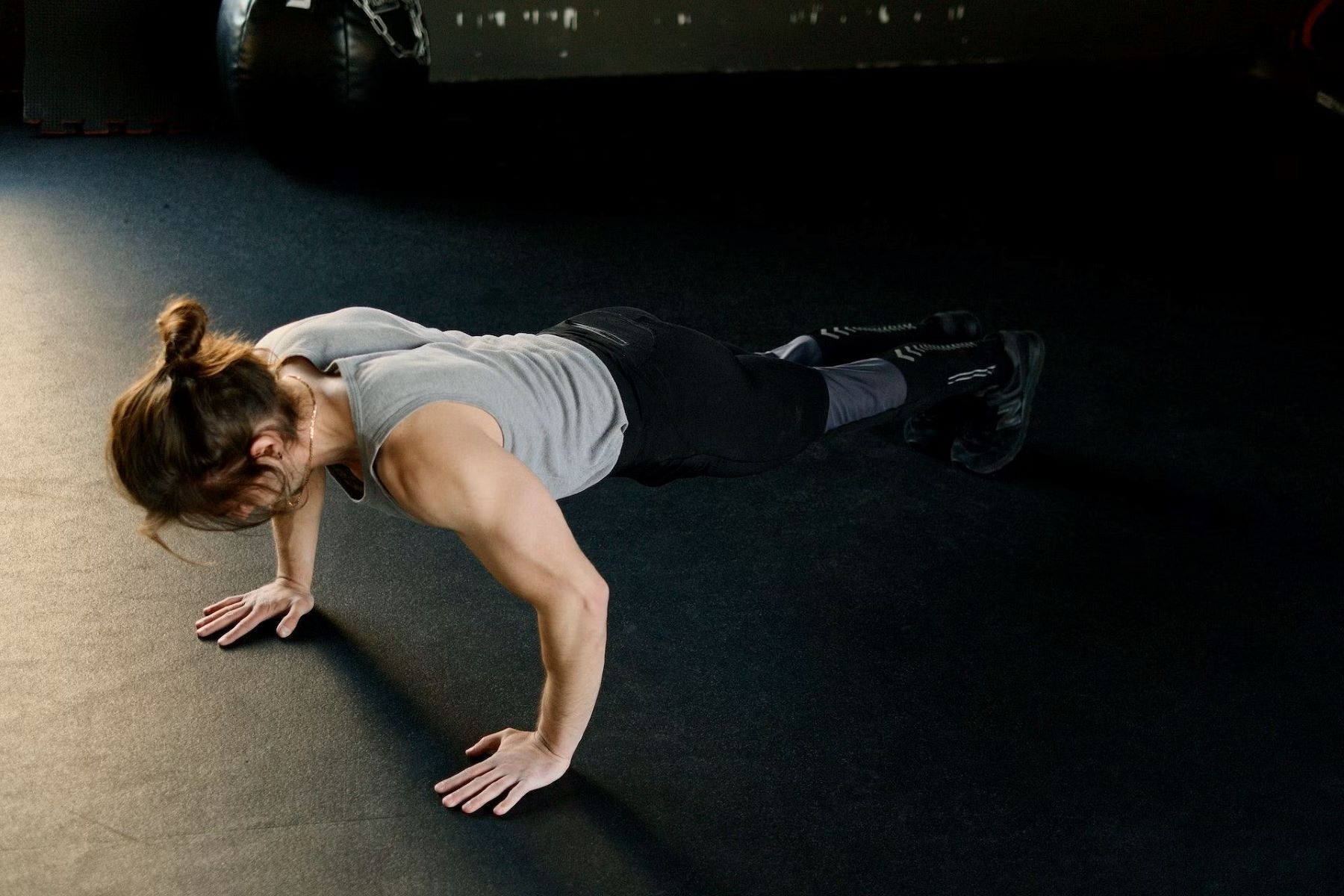

Featured
How To Workout Biceps Without Equipment
Modified: January 2, 2024
Get strong and defined biceps without the need for expensive gym equipment. Discover effective workouts and techniques in this featured guide.
Introduction
When you think of strong and well-defined arms, the biceps are often the first muscles that come to mind. These powerful muscles not only contribute to your overall upper body strength but also add aesthetic appeal to your physique. While many people associate bicep workouts with heavy dumbbells and barbells, it’s important to note that you can effectively work out your biceps without any equipment.
Whether you don’t have access to a gym or simply prefer the convenience of home workouts, there are plenty of bodyweight exercises, resistance band exercises, and isometric exercises that can target and challenge your biceps. The best part is that these exercises can be done anywhere and anytime, making it easier for you to stay consistent with your fitness routine.
In this article, we will explore a range of exercises and techniques that will help you build strong and sculpted biceps without the need for any equipment. From warm-up exercises to bodyweight exercises and even resistance band exercises, we will cover it all. So, if you’re ready to tone and strengthen your biceps while working out in the comfort of your own home, let’s dive in.
Benefits of Working Out Biceps Without Equipment
Working out your biceps without equipment offers several benefits that can enhance your fitness journey. Here are some key advantages:
- Convenience: One of the biggest benefits of bicep exercises without equipment is the convenience factor. You can perform these exercises at home, in a park, or even while traveling. This flexibility allows you to stay consistent with your workouts regardless of your location.
- Variety of Exercises: There is a wide range of bodyweight bicep exercises available that can effectively target your muscles. From push-ups to planks, you can engage your biceps in various ways without the need for dumbbells or barbells. This variety not only keeps your workouts interesting but also helps in preventing plateaus and muscle imbalances.
- No Cost Involved: Another significant advantage is that you don’t have to invest in expensive gym equipment to work out your biceps. You can achieve great results with just your bodyweight or a resistance band, making it a cost-effective option for fitness enthusiasts.
- Functional Strength: Many bodyweight bicep exercises focus on compound movements that engage multiple muscle groups simultaneously. This not only helps in building bicep strength but also develops functional strength, enabling you to perform everyday tasks more efficiently and reduce the risk of injuries.
- Improved Muscle Activation: Working out biceps without equipment often requires more stabilization and control, leading to improved muscle activation. By utilizing your own bodyweight as resistance or incorporating isometric exercises, you can target and engage the biceps in a way that promotes optimal muscle growth and definition.
- Growth and Definition: Contrary to popular belief, you can achieve significant bicep growth and definition through bodyweight exercises alone. By continuously challenging your muscles with progressive overload and incorporating different variations of exercises, you can effectively stimulate muscle growth and achieve the sculpted biceps you desire.
With the numerous benefits mentioned above, it’s clear that working out your biceps without equipment can be a valuable addition to your fitness routine. Let’s now explore some warm-up exercises that can help prepare your biceps for an effective workout.
Warm-Up Exercises for Biceps
Before diving into your bicep workout, it’s essential to properly warm up your muscles to prevent injuries and optimize performance. Here are a few effective warm-up exercises that specifically target the biceps:
- Arm Circles: Stand with your feet shoulder-width apart and extend your arms out to the sides. Make small circles with your arms, gradually increasing the size of the circles. Perform 10 forward circles and then 10 backward circles to loosen up the shoulder and activate the biceps.
- Arm Swings: Stand with your feet hip-width apart and extend your arms in front of you. Swing your arms backward in a controlled motion, squeezing your shoulder blades together, and then swing them forward, focusing on stretching the biceps. Repeat this movement for 10 to 12 reps.
- Wrist Circles: Extend your arms straight in front of you with your palms facing down. Slowly rotate your wrists in small circles in both clockwise and counterclockwise directions. Perform 10 circles in each direction to warm up the wrist joints and engage the biceps.
- Push-Ups: While commonly known as a chest exercise, push-ups also engage the biceps as supporting muscles. Begin in a plank position with your hands slightly wider than shoulder-width apart. Lower your body by bending your elbows, keeping them close to your sides, and then push back up to the starting position. Aim for 10 to 15 push-ups to activate the biceps and warm up the upper body.
- Shadow Boxing: Stand with your feet shoulder-width apart and extend your arms as if you were holding light dumbbells. Start punching the air alternating between the left and right arms. Focus on contracting the biceps with each punch and maintain a steady rhythm for 1 to 2 minutes.
These warm-up exercises are simple yet effective in activating and preparing your biceps for the main workout. Remember to perform them in a controlled manner, focusing on proper form and gradually increasing the intensity. Once warmed up, you can move on to the bicep exercises without equipment to further challenge and develop your muscles.
Bodyweight Exercises for Biceps
If you think you need dumbbells or barbells to work out your biceps effectively, think again. There are several bodyweight exercises that can provide a challenging workout for your biceps. Here are some of the best bodyweight exercises for biceps:
- Push-Ups: Push-ups not only target your chest and triceps but also engage the biceps as supporting muscles. Start in a plank position with your hands slightly wider than shoulder-width apart. Lower your body by bending your elbows, keeping them close to your sides, and then push back up. Aim for 3 sets of 10 to 15 push-ups.
- Chin-Ups: Chin-ups are a fantastic bodyweight exercise that primarily targets the biceps. Find a sturdy bar or use a doorway pull-up bar. Hang from the bar with your hands shoulder-width apart and palms facing towards you. Pull your body up until your chin is above the bar, and then slowly lower yourself back down. Aim for 3 sets of 8 to 12 chin-ups.
- Diamond Push-Ups: Diamond push-ups are a variation of the traditional push-up that places more emphasis on the biceps. Get into a push-up position and bring your hands close together, forming a diamond shape with your index fingers and thumbs. Lower your body, keeping your elbows close to your sides, and then push back up. Aim for 3 sets of 10 to 15 diamond push-ups.
- Dive Bomber Push-Ups: Dive bomber push-ups work the entire upper body, including the biceps. Start in a downward dog position with your hands slightly wider than shoulder-width apart and your hips raised. Move your body in an arc motion, lowering your head towards the floor, and then swoop your chest forward as you straighten your arms. Reverse the motion to return to the starting position. Aim for 3 sets of 8 to 12 dive bomber push-ups.
- Isometric Hold: Isometric exercises can effectively target and engage the biceps without any equipment. Stand with your feet shoulder-width apart and extend your arms straight out in front of you, palms facing up. Flex your biceps and hold this position for 30 to 60 seconds. You should feel a deep burn in your biceps during the hold.
These bodyweight exercises provide a challenging workout for your biceps and can be easily incorporated into your routine. Remember to focus on maintaining proper form and gradually increasing the intensity as you get stronger. As we move on, let’s explore how resistance bands can be utilized to further enhance your bicep workout.
Resistance Band Exercises for Biceps
Resistance bands are versatile and effective tools for working out your biceps, offering adjustable resistance and a wide range of exercises. Here are some resistance band exercises that specifically target the biceps:
- Bicep Curls: Step on the resistance band with your feet shoulder-width apart, holding the band with an underhand grip. Keep your elbows close to your sides and slowly curl your hands up towards your shoulders. Pause for a moment at the top, squeezing your biceps, and then slowly lower your hands back down. Aim for 3 sets of 12 to 15 bicep curls.
- Hammer Curls: Similar to bicep curls, but with a different hand position. Hold the resistance band with your palms facing towards your body, keeping your elbows close to your sides. Curl your hands up towards your shoulders, maintaining the neutral hand position. Pause briefly at the top and then slowly lower your hands back down. Aim for 3 sets of 12 to 15 hammer curls.
- Resistance Band Pull-Aparts: Hold the resistance band with both hands, palms facing downwards, and hands shoulder-width apart. Extend your arms straight out in front of you at chest level, keeping a slight bend in your elbows. Pull the band apart, squeezing your shoulder blades together, until your hands are pulled back to the sides of your chest. Slowly return to the starting position. Aim for 3 sets of 10 to 12 resistance band pull-aparts.
- Resistance Band Preacher Curls: Anchor the resistance band securely to a vertical surface, such as a sturdy post or door handle. Sit or stand facing the band and place your upper arms firmly against the band. With your palms facing up, curl your hands towards your shoulders, keeping your upper arms stationary. Pause briefly at the top and then slowly lower your hands back down. Aim for 3 sets of 10 to 12 resistance band preacher curls.
- Reverse Grip Rows: Anchor the resistance band securely to a horizontal surface, such as a low bar or sturdy table leg. Stand facing the band, holding the ends with your palms facing up. Step back to create tension in the band and keep your back straight. Bend your elbows and pull the band towards your body, squeezing your shoulder blades together. Slowly release the tension and extend your arms back to the starting position. Aim for 3 sets of 10 to 12 reverse grip rows.
Resistance band exercises provide constant tension throughout the movement, challenging your biceps in a different way than bodyweight exercises. Incorporating these exercises into your routine can help you develop strength and definition in your biceps. As we continue, let’s explore another effective technique for working out your biceps without equipment: isometric exercises.
Isometric Exercises for Biceps
Isometric exercises involve contracting the muscles without any movement, making them an excellent addition to your bicep workout routine. Not only do isometric exercises help in building strength, but they also improve muscle endurance and stability. Here are a few isometric exercises that target the biceps:
- Wall Sit Bicep Curl: Position yourself against a wall with your back flat against it. Hold your arms in a 90-degree angle, as if you are performing a bicep curl. Push your arms against the wall, engaging the biceps and keeping them contracted for 30 seconds to 1 minute.
- Tabletop Isometric Hold: Sit on the edge of a sturdy table or platform, placing your hands beside your hips with fingers pointing forward. Lift your body off the table, keeping your knees bent at a 90-degree angle. Hold this position, engaging your biceps, for 30 seconds to 1 minute.
- Isometric Bicep Squeeze: Stand with your feet shoulder-width apart, extend your arms straight out in front of you, palms facing up. Slowly bend your elbows, bringing your hands towards your shoulders to create resistance. Press your palms together as hard as you can, engaging your biceps, and hold this position for 30 seconds to 1 minute.
- Cobra Pose Push-Up Hold: Start in a plank position with your palms on the ground directly below your shoulders. Lower your body down towards the ground, keeping your elbows close to your body. Pause when your chest is a few inches off the ground and hold this position, engaging your biceps, for 30 seconds to 1 minute.
- Isometric Towel Curl: Grab a towel and hold it in both hands, shoulder-width apart. Extend your arms fully and pull the towel apart, creating tension. Keeping the tension in the towel, contract your biceps as hard as you can and hold for 30 seconds to 1 minute.
Remember to focus on maintaining a strong and steady contraction in your biceps throughout these exercises. Isometric exercises can be challenging but highly effective for developing strength and stability in your biceps. Now that we have covered the different types of bicep exercises without equipment, let’s move on to some tips and guidelines to optimize your workouts.
Tips and Guidelines for Effective Bicep Workouts
To make the most out of your bicep workouts without equipment and ensure optimal results, here are some tips and guidelines to follow:
- Gradually Increase Intensity: Start with exercises that match your current fitness level and gradually increase the intensity over time. This allows your muscles to adapt and grow stronger without risking injuries.
- Focus on Proper Form: Pay attention to your form during each exercise to ensure that you are targeting the biceps effectively. Avoid using momentum or swinging motions, and instead, prioritize controlled and deliberate movements.
- Progressive Overload: Continuously challenge your biceps by increasing the resistance or difficulty of your exercises. This can be done by adding more repetitions, sets, or incorporating more advanced variations of the exercises.
- Allow for Rest and Recovery: Adequate rest and recovery are crucial for muscle growth and optimal performance. Ensure that you give your biceps enough time to rest between workouts to avoid overtraining and promote proper muscle repair.
- Include Variety in Your Routine: Incorporate a mix of bodyweight exercises, resistance band exercises, and isometric exercises to keep your workouts interesting and ensure balanced muscle development.
- Maintain a Balanced Diet: Proper nutrition plays a significant role in muscle growth and recovery. Ensure you’re consuming enough protein, carbohydrates, and healthy fats to support your bicep workouts and overall fitness goals.
- Listen to Your Body: Pay attention to any discomfort or pain during your workouts. If something doesn’t feel right, modify the exercise or consult with a fitness professional to ensure you’re performing the movements correctly and safely.
- Stay Consistent: Consistency is key when it comes to seeing results. Aim for regular bicep workouts, ideally 2-3 times per week, to keep your muscles engaged and continuously improve strength and definition.
By following these tips and guidelines, you can maximize the effectiveness of your bicep workouts without equipment. Remember that everyone’s fitness journey is unique, so listen to your body and adjust as necessary to suit your individual needs and goals. Now you have the tools and knowledge to develop strong and well-defined biceps without the requirement of any equipment.
Conclusion
Working out your biceps without equipment is not only convenient but also highly effective in building strength and definition. Whether you choose bodyweight exercises, resistance band exercises, isometric exercises, or a combination of all three, there are plenty of options to challenge your biceps and achieve your fitness goals.
We explored the benefits of working out biceps without equipment, including the convenience of exercising anywhere and anytime, the variety of exercises available, and the cost-effective nature of these workouts. Additionally, we discussed the importance of warming up your biceps before diving into the main exercises, and we provided a range of warm-up exercises to prepare your muscles for the workout.
Bodyweight exercises such as push-ups and chin-ups engage the biceps effectively, while resistance band exercises provide adjustable resistance to target and stimulate muscle growth. Isometric exercises, on the other hand, help in building strength and stability in the biceps without any movement.
To make your bicep workouts successful, we provided tips and guidelines such as gradually increasing intensity, focusing on proper form, incorporating variety in your routine, and allowing for adequate rest and recovery. Consistency and a balanced diet are also crucial factors in achieving your desired results.
In conclusion, working out your biceps without equipment is a convenient and effective way to build strength and sculpted arms. With the knowledge and exercises outlined in this article, you have the tools to create a challenging and fulfilling bicep workout routine that can be done anytime, anywhere.
